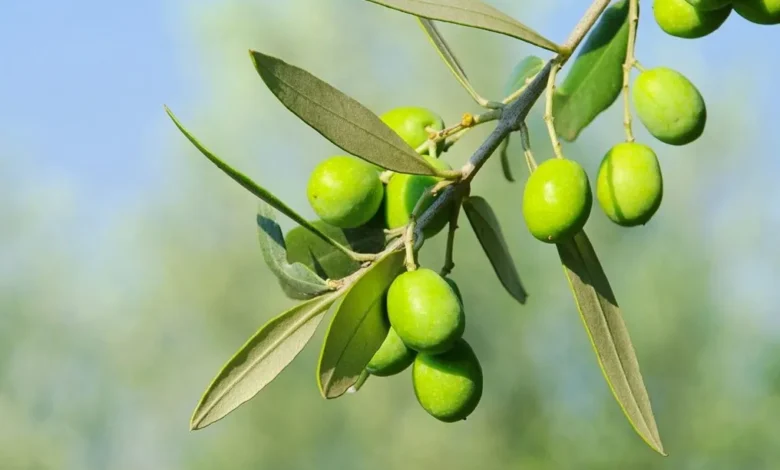Olive Trees: A Detailed and Unique Overview

Olive Trees scientifically known as Olea europaea, are one of the most ancient and iconic tree species in the world. Revered for their resilience, historical significance, and the many products they provide, these trees hold a special place in agricultural, culinary, and cultural traditions. Their deep roots in Mediterranean regions, rich history, and extraordinary ability to thrive in challenging environments make them both fascinating and valuable. This article delves into the details of Olive Trees , their origins, characteristics, growing conditions, and their many uses across the world.
Origins and Historical Significance
The olive tree is one of the oldest cultivated trees, with records indicating its presence in Mediterranean regions as early as 3000 BCE. Native to countries like Greece, Turkey, Italy, and Spain, the olive tree’s deep connection with Mediterranean culture is undeniable. Archaeological evidence shows that ancient civilizations valued the olive tree not just as a source of food but also as a symbol of peace, wisdom, and prosperity.
Historically, olive trees played a significant role in both practical and symbolic contexts. The ancient Greeks used olive branches as symbols of peace and victory. Winners of the Olympic Games were crowned with olive wreaths, highlighting the tree’s revered status. In ancient Rome, olive oil was a staple in daily life, used for cooking, medicinal purposes, and even in religious ceremonies.
The olive tree’s cultural significance extended beyond the Mediterranean. As European powers explored and colonized various parts of the world, the olive tree spread to the Americas, Australia, and other regions with suitable climates. The cultivation of olives has become a cornerstone of Mediterranean cuisine, forming the basis for one of the world’s most important agricultural products: olive oil.
Characteristics of Olive Trees
Olive Trees are evergreen, small to medium-sized trees that typically grow between 15 and 30 feet tall, though some varieties can grow taller. The tree’s most distinctive feature is its gnarled and twisted trunk, which adds to its ancient and enduring appearance. Olive trees are slow-growing but long-living, with some trees estimated to be over a thousand years old, continuing to produce fruit year after year.
The leaves of the olive tree are narrow, lance-shaped, and silvery-green, giving the tree a distinctive and elegant appearance. The silvery hue of the leaves is due to tiny hairs on the surface that help the tree conserve water in its native dry climate. These leaves are evergreen, remaining on the tree throughout the year.
Olive trees bloom with small, fragrant flowers that are creamy white in color. The flowers grow in panicles or clusters and are primarily pollinated by wind and insects. These flowers are followed by small, oval-shaped fruits, which begin green and ripen to purple or black as they mature. The fruit is edible, but the bitterness is so strong that olives must be processed before they can be consumed. Most olives are harvested for oil production, although they are also pickled or used in various Mediterranean dishes.
Longevity and Resilience
One of the most remarkable features of the olive tree is its ability to live for centuries, and in some cases, millennia. The longevity of the olive tree is legendary, with some trees still bearing fruit after over a thousand years. This incredible lifespan is largely due to the tree’s ability to regenerate itself. Even when the trunk is damaged, the tree can sprout new shoots and continue to grow, ensuring its survival for many generations.
The resilience of the olive tree is equally impressive. These trees are well-adapted to harsh conditions, including drought, high temperatures, and poor soil. In fact, Olive Trees are often considered symbols of strength and endurance. They have a remarkable ability to withstand extreme weather conditions, such as intense heat and dry spells, making them well-suited to arid climates.
Their resistance to pests and diseases further enhances their resilience. Olive trees are not highly susceptible to many common plant diseases, and their ability to thrive with minimal water and attention makes them a popular choice for sustainable agriculture in dry regions.
Growing Conditions and Cultivation
Olive Trees are well-suited to warm, dry climates, which is why they are predominantly found in the Mediterranean region. They thrive in regions with mild, wet winters and long, hot, dry summers. While they can tolerate occasional frost, they generally struggle in freezing temperatures, which is why they are not suitable for colder climates. Their native range extends across the Mediterranean Basin, including parts of Southern Europe, North Africa, and the Middle East.
The soil in which Olive Trees are planted must be well-drained, as they do not tolerate waterlogging. Olive Trees prefer slightly alkaline soils and are tolerant of a wide range of soil types, from rocky hillsides to sandy loams. In fact, they are often grown on terraced hillsides, where their roots can anchor the soil and prevent erosion.
Olive Trees require very little water once established, and they are drought-tolerant. This makes them particularly well-suited for arid regions with low rainfall. However, young trees need to be watered regularly until they are established, after which they become self-sufficient. In areas with limited rainfall, irrigation systems may be used, but it’s crucial not to overwater, as the tree’s roots are prone to rot if the soil remains too wet.
While Oliver trees can be propagated through both seeds and cuttings, the most common method of propagation is by taking cuttings from mature trees. This ensures that the new tree will maintain the same genetic traits as the parent tree. When planting olive trees, it’s important to space them at least 10 feet apart to allow for proper growth and to ensure that the trees receive adequate sunlight.
The Role of Oliver Trees in Agriculture
The primary product harvested from Olive Trees is olives, which are processed to produce olive oil. Olive oil has been a cornerstone of Mediterranean cuisine for centuries, and it is widely regarded as one of the healthiest cooking oils available. Rich in monounsaturated fats and antioxidants, olive oil is known for its heart-healthy benefits, reducing the risk of heart disease and promoting overall health.
In addition to olive oil, olives are also consumed in various forms. They can be eaten raw, but due to their bitterness, they are typically cured or pickled before being consumed. Olives are a popular addition to salads, pasta dishes, and tapenade, a Mediterranean spread made from olives, capers, and olive oil.
The demand for olive oil has skyrocketed in recent decades, with the global market for olive oil growing substantially. The Mediterranean diet, which emphasizes the consumption of olive oil and other plant-based foods, has gained popularity worldwide due to its health benefits. As a result, olive oil production has expanded to other regions outside the Mediterranean, including California, Australia, and South America.
Beyond olives and olive oil, the wood of the olive tree is highly prized. Olive wood is dense, durable, and has a rich, warm color with a distinctive grain pattern. It is often used in the creation of high-quality furniture, kitchenware, and decorative items. The unique texture and appearance of olive wood make it highly sought after by craftsmen and artisans.
Environmental and Ecological Importance
Olive Trees play an essential role in their ecosystems. Their deep roots help to anchor the soil and prevent erosion, particularly in the hilly and rocky terrain of the Mediterranean. This makes olive trees an important part of sustainable farming practices, particularly in regions prone to soil erosion.
The Olive Trees also contributes to biodiversity. Its flowers provide nectar for pollinators, and its fruit serves as food for a variety of wildlife, including birds, mammals, and insects. Olive groves are often home to a diverse range of species, including migratory birds that stop to feed during their journeys.
In addition to their role in supporting local wildlife, olive trees contribute to carbon sequestration. Their ability to absorb carbon dioxide from the atmosphere helps mitigate the effects of climate change. Olive trees are often seen as a sustainable agricultural option, as they require little water and are resistant to many pests and diseases.
Challenges and Future of Olive Cultivation
While Olive Trees are remarkably resilient, they are not without their challenges. Climate change, particularly rising temperatures and altered rainfall patterns, poses a threat to traditional olive-growing regions. In some areas, prolonged heatwaves and droughts can lead to reduced yields and even tree mortality. Additionally, olive trees are vulnerable to certain pests, such as the olive fruit fly, which can significantly damage crops.
Another concern for the future of olive cultivation is the increasing demand for olive oil. As more regions around the world begin to cultivate olives, competition for land and water resources is intensifying. This could lead to environmental degradation if olive farming is not managed sustainably.
To address these challenges, researchers are exploring new methods of olive cultivation, including the development of more drought-tolerant varieties and the use of more sustainable farming practices. Organic farming techniques, for example, are being adopted to reduce the environmental impact of olive production.
Conclusion
The Oliver tree is a symbol of endurance, resilience, and cultural richness. Its historical significance, unique characteristics, and valuable products make it one of the most important trees in the world. From providing olives and olive oil to contributing to environmental sustainability, the Olive Trees role in agriculture and the environment is vast.
As the demand for olive oil and other olive-based products continues to grow, it is essential to focus on sustainable cultivation practices to ensure the long-term health and productivity of olive orchards. By embracing sustainable farming techniques, we can continue to enjoy the benefits of Oliver trees for generations to come.
Whether through their fruit, their wood, or their ecological contributions, Olive Trees will continue to thrive in Mediterranean landscapes and beyond, remaining an enduring symbol of nature’s power and human ingenuity.




